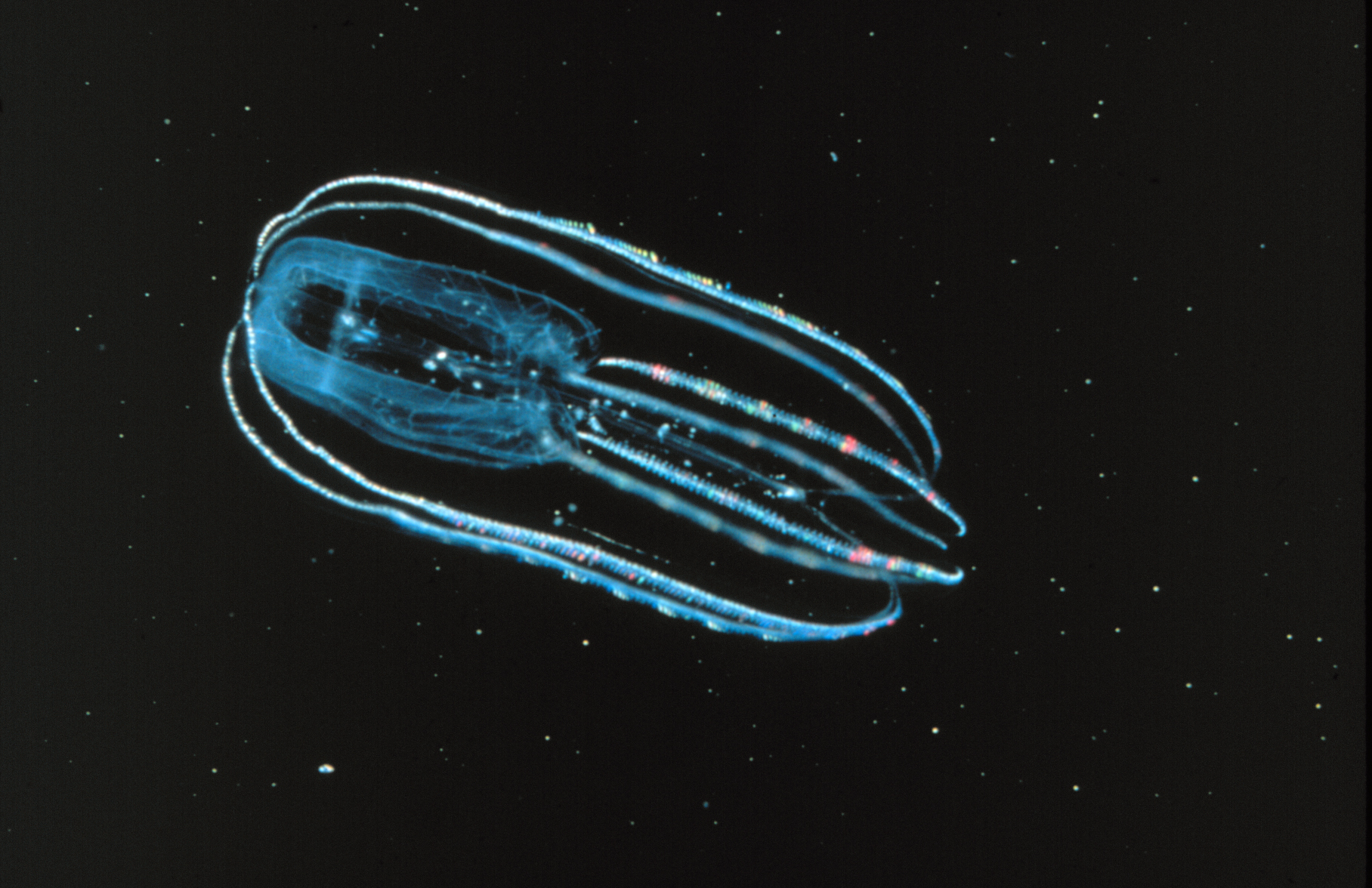Lobata on:
[Wikipedia]
[Google]
[Amazon]
 Lobata is an order of
Lobata is an order of
 Lobata is an order of
Lobata is an order of Ctenophora
Ctenophora (; ctenophore ; ) comprise a phylum of marine invertebrates, commonly known as comb jellies, that inhabit sea waters worldwide. They are notable for the groups of cilia they use for swimming (commonly referred to as "combs"), and ...
in the class Tentaculata
Tentaculata is a class of comb jellies. The common feature of this class is a pair of long, feathery, contractile tentacles, which can be retracted into specialised ciliated sheaths. In some species, the primary tentacles are reduced and they ...
with smaller tentacle
In zoology, a tentacle is a flexible, mobile, and elongated organ present in some species of animals, most of them invertebrates. In animal anatomy, tentacles usually occur in one or more pairs. Anatomically, the tentacles of animals work main ...
s than other ctenophores, and distinctive flattened lobes extending outwards from their bodies.
They grow up to about long.
Anatomy
The lobates have a pair of lobes, which are muscular, cuplike extensions of the body that project beyond the mouth. Their inconspicuous tentacles originate from the corners of the mouth, running in convoluted grooves and spreading out over the inner surface of the lobes (rather than trailing far behind, as in the Cydippida). Between the lobes on either side of the mouth, many species of lobates have four auricles, gelatinous projections edged with cilia that produce water currents that help direct microscopic prey toward the mouth. This combination of structures enables lobates to feed continuously on suspendedplankton
Plankton are the diverse collection of organisms found in water (or air) that are unable to propel themselves against a current (or wind). The individual organisms constituting plankton are called plankters. In the ocean, they provide a cr ...
ic prey.
Lobates have eight comb-rows, originating at the aboral pole and usually not extending beyond the body to the lobes; in species with (four) auricles, the cilia edging the auricles are extensions of cilia in four of the comb rows. Most lobates are quite passive when moving through the water, using the cilia on their comb rows for propulsion, although ''Leucothea'' has long and active auricles whose movements also contribute to propulsion. Members of the lobate genera
Genus ( plural genera ) is a taxonomic rank used in the biological classification of living and fossil organisms as well as viruses. In the hierarchy of biological classification, genus comes above species and below family. In binomial ...
''Bathocyroe
''Bathocyroe'' is a genus of ctenophores, the only genus in the family Bathocyroidae.
References
Lobata
Ctenophore genera
{{Ctenophore-stub ...
'' and '' Ocyropsis'' can escape from danger by clapping their lobes, so that the jet of expelled water drives them backwards very quickly.
Unlike cydippids, the movements of lobates' combs are coordinated by nerves rather than by water disturbances created by the cilia, and combs on the same row beat together rather than in Mexican wave
The wave (known as a Mexican wave or stadium wave outside of North America) is an example of metachronal rhythm achieved in a packed stadium when successive groups of spectators briefly stand, yell, and raise their arms. Immediately upon st ...
style. This may have enabled lobates to grow larger than cydippids and to have shapes that are less egg-like.
An unusual species first described in 2000, '' Lobatolampea tetragona'', has been classified as a lobate, although the lobes are "primitive" and the body is medusa
In Greek mythology, Medusa (; Ancient Greek: Μέδουσα "guardian, protectress"), also called Gorgo, was one of the three monstrous Gorgons, generally described as winged human females with living venomous snakes in place of hair. Those ...
-like when floating and disk-like when resting on the sea-bed.
External links
{{Taxonbar, from=Q149121 Tentaculata